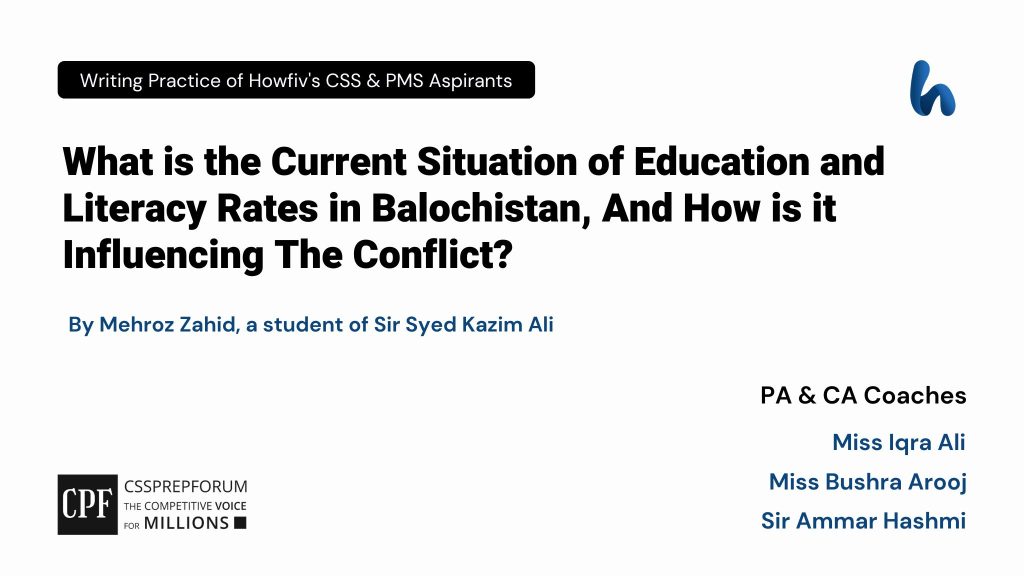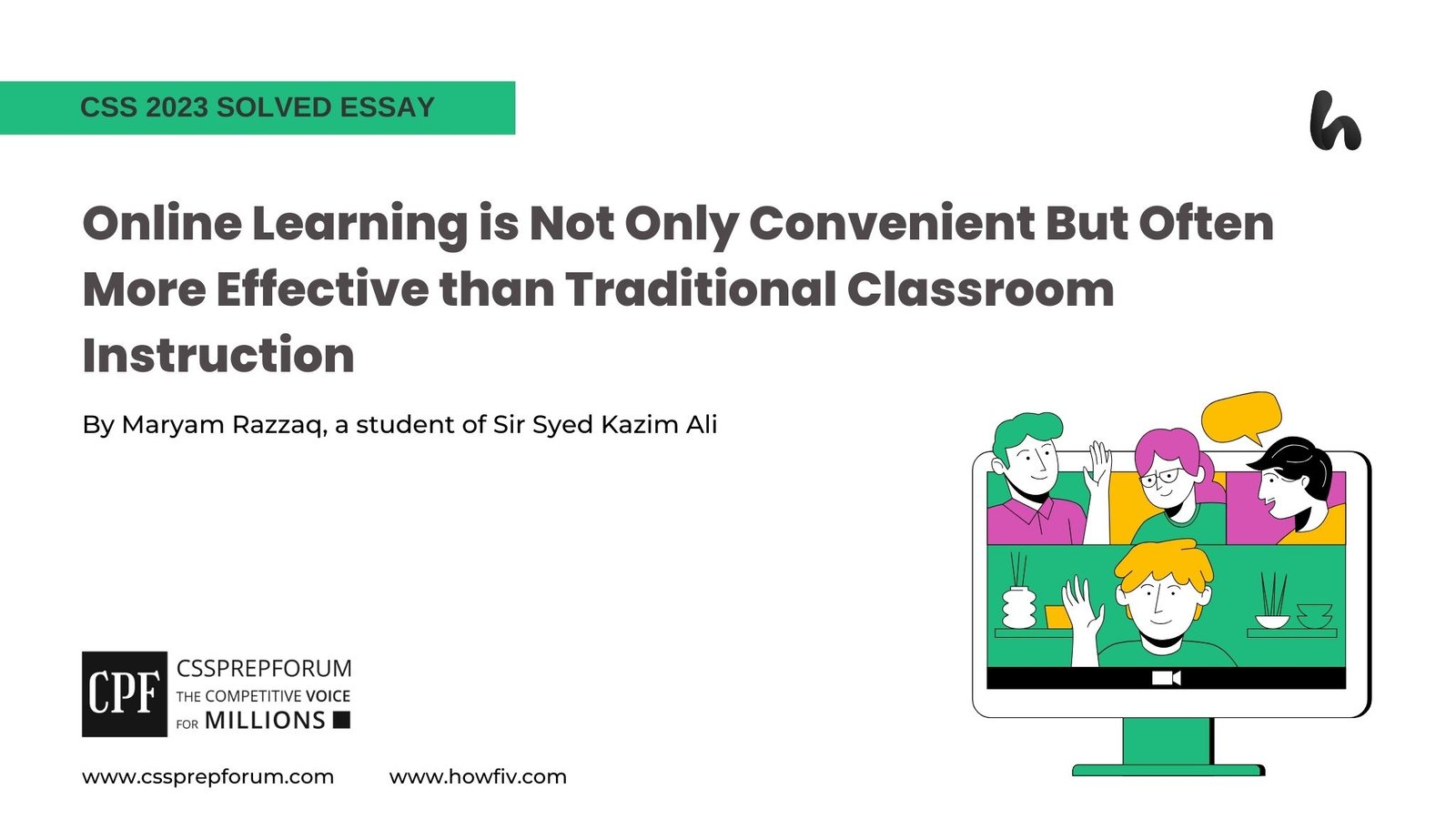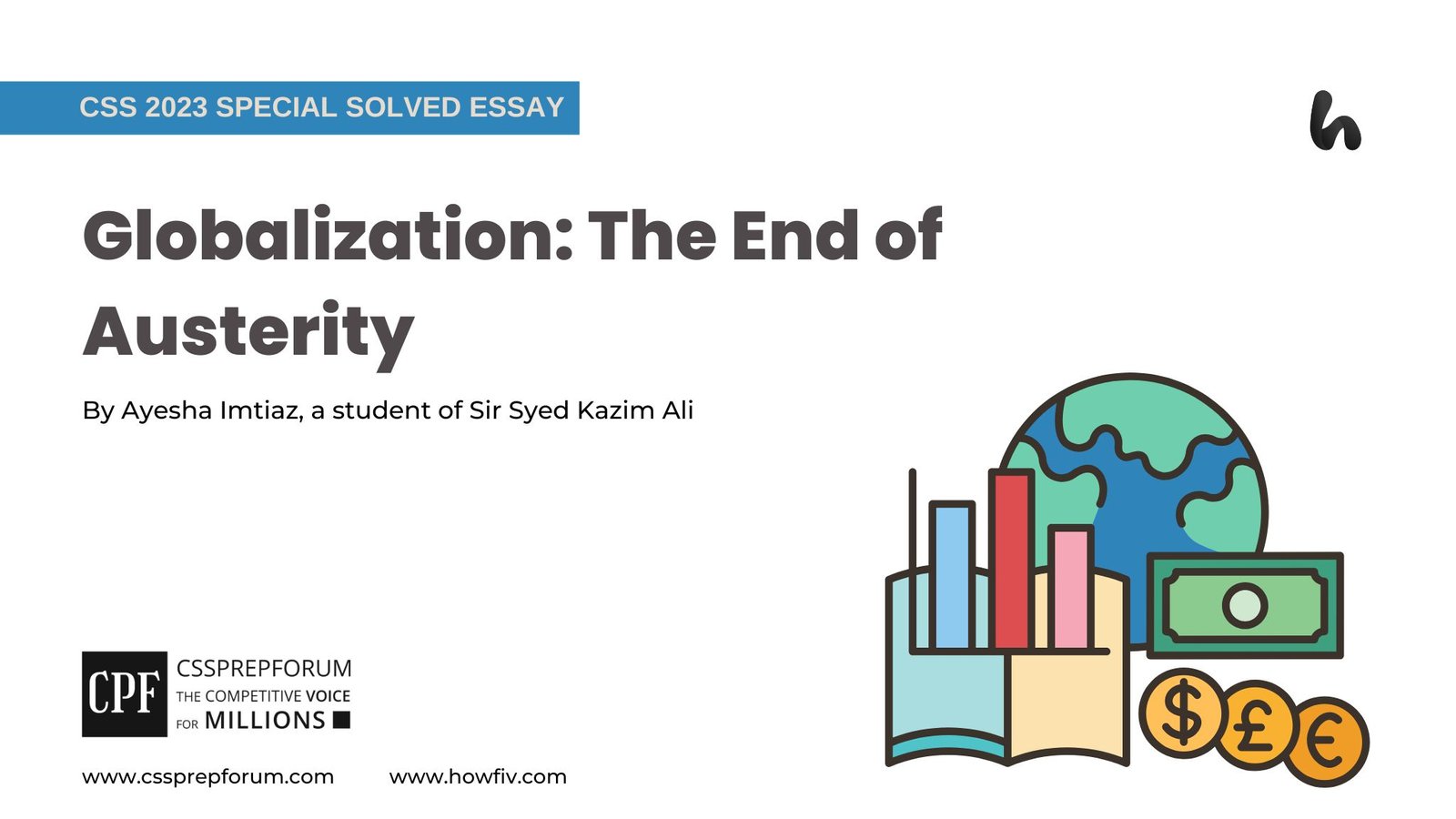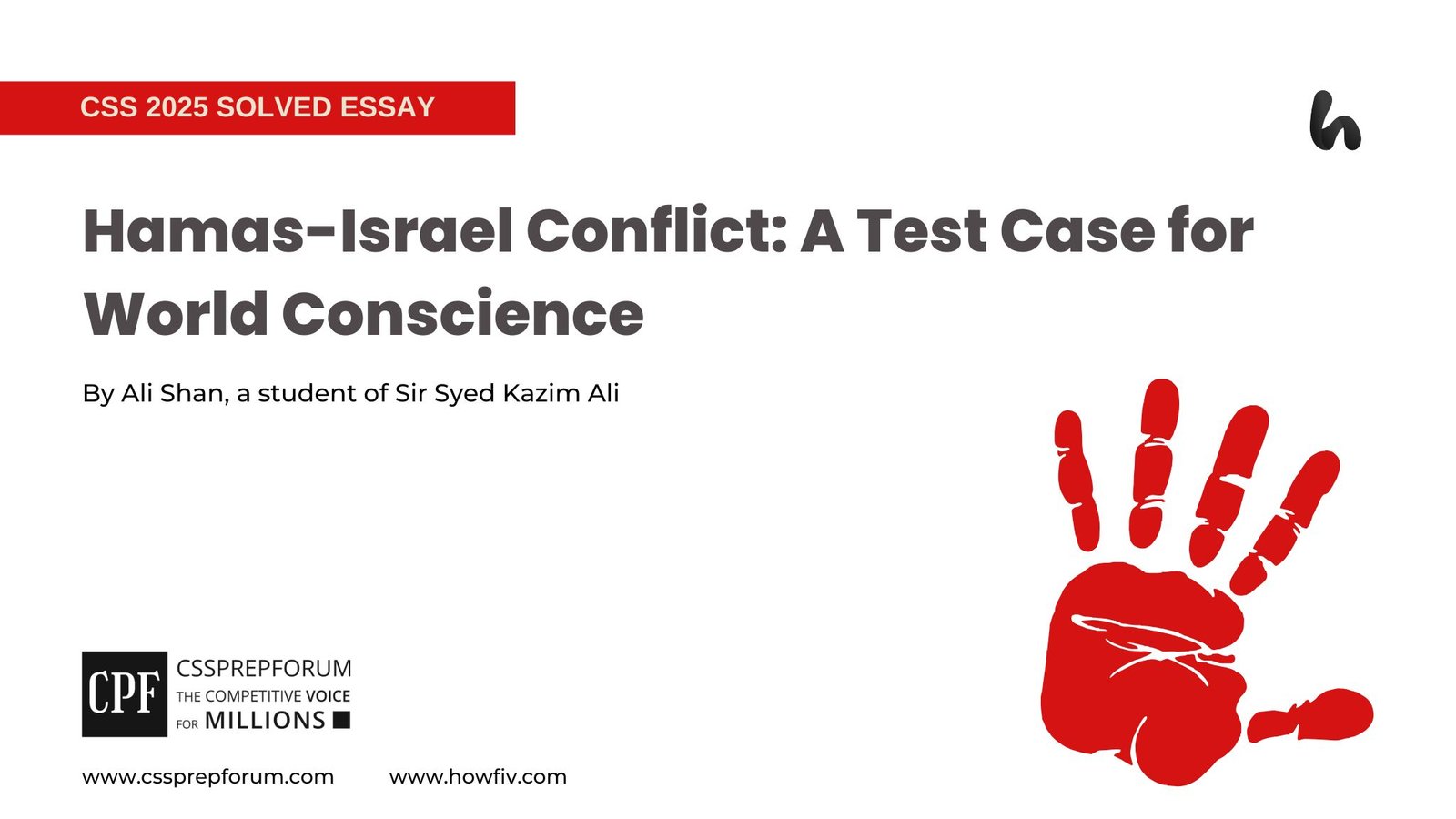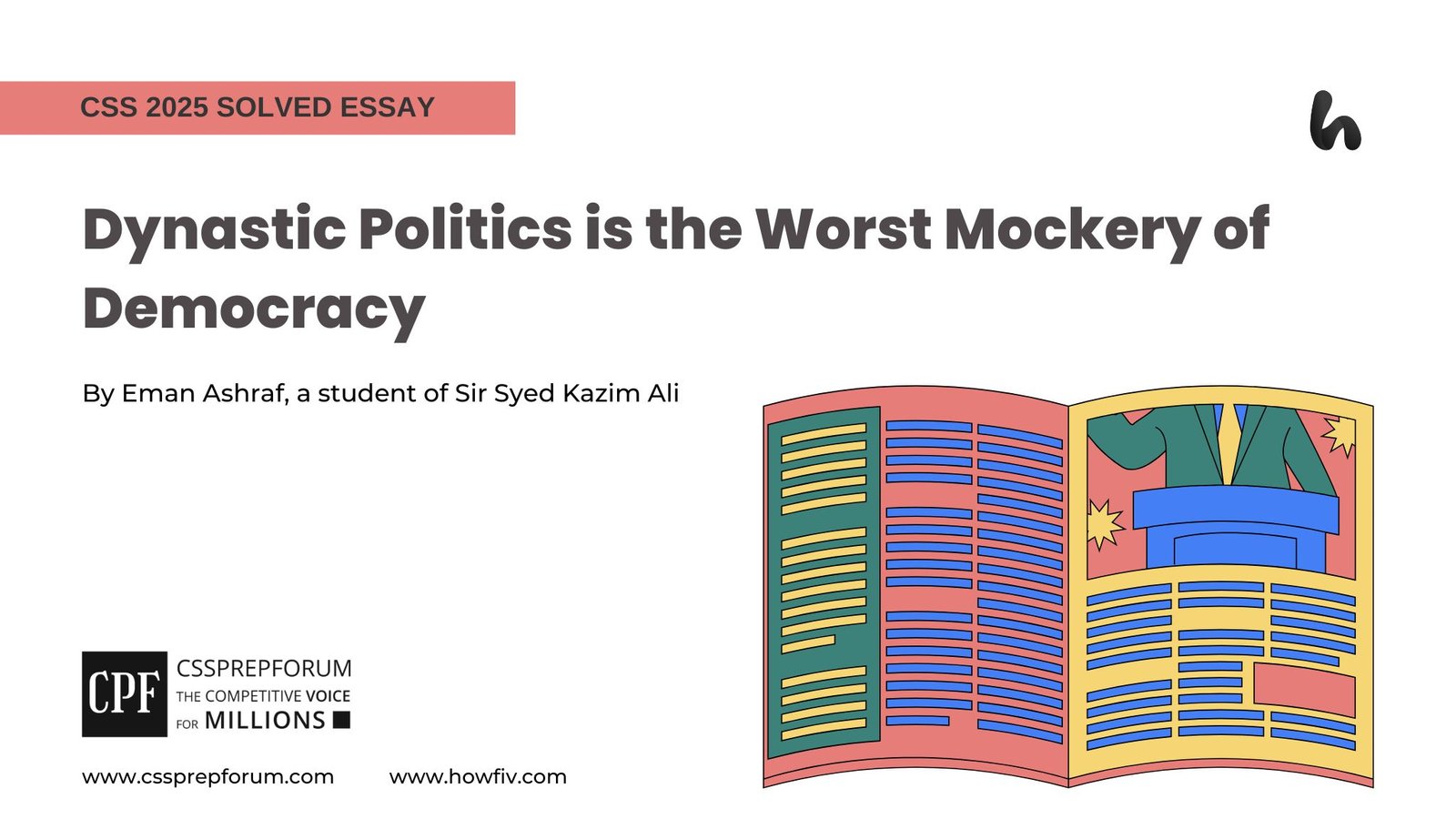CSS Current Affairs | Situation of Education in Balochistan
The following question of CSS Current Affairs is solved by Mehroz Zahid under the supervision of Howfiv’s Pakistan Affairs and Current Affairs Coaches. She learnt how to attempt 20 marks question and essay writing from Sir Syed Kazim Ali, Pakistan’s best CSS and PMS English essay and precis teacher with the highest success rate of his students. This solved past paper question is attempted on the pattern taught by Sir to his students, scoring the highest marks in compulsory and optional subjects for years, and uploaded to help aspirants understand how to crack a topic or question, how to write relevantly, what coherence is, and how to include and connect ideas, opinions, and suggestions to score the maximum.

Outline
1- Introduction
2- Background and current situation of the Balochistan conflict
3- Current situation of education in Balochistan
- ✓ Poor infrastructure and less access to higher education
- ✓ Poor quality of education
- ✓ Less enrollment and high dropout rates
4- Current situation of literacy rates in Balochistan
- ✓ Gender disparity
- ✓ Low rural and urban literacy rates
- ✓ Lowest literacy rate in Pakistan
5- Influence of education and literacy rates on the conflict
- ✓ Marginalization and limited grievances
- ✓ Youth Unemployment and Militancy
- ✓ Political mobilization violence
- ✓ Cultural Preservation
6- Critical analysis
7- Conclusion

Answer to the Question
Introduction
Balochistan, Pakistan’s largest province in terms of surface area, faces socio-economic problems, especially education. The education system in the region is minimal, there are no foundations, on-strategic schools are rapidly expanding, and there is a large gap between enrollment and skills. The province has the lowest education rate in Pakistan, with rural female literacy falling below 10% in some areas. As a result of this neglect of education, unemployment, social isolation, and poor economic conditions reach more severe levels. Many young people are easily radicalized because they do not have access to education, and opposition groups exploit their anger and sense of isolation. Lack of education can also lead to political violence, apathy and a desire for greater freedom. Overall, low levels of education in Balochistan are a source of conflict and increase the risk of poverty, violence and conflict. This plan addresses these challenges and creates a framework to support long-term relationships and prosperity in the region.
Background and current situation of the Balochistan conflict
The protests in Balochistan are based on genuine grievances, economic losses, and political neglect. After independence from Pakistan, the Baloch sought greater independence and control over the country’s vast resources. Military strikes and military strikes lead to conflict. Denial of fundamental freedoms and loss of rights also lead to hatred of the central government. Poor sanitary conditions in the province, including low literacy rates, high unemployment, and homelessness, also lead to isolation. Social and economic factors other than national sentiment that could lead to resistance were not considered. Some progress has been made through development plans and negotiations, but any long-term solution must adequately address political, financial and social issues.
Current situation of education in Balochistan
Currently, the quality of education in Balochistan is poor, and development problems are severe.
- Poor infrastructure and less access to higher education
Balochistan’s current state of education highlights serious development challenges and limited access to higher education. Especially in remote cities, a lack of basic amenities such as proper classrooms, electricity and sanitation hinders a productive learning environment. According to the Annual Report on Education for Persons with Disabilities (ASER), Balochistan has one of the highest numbers of persons with disabilities in Pakistan’s schools. More than 2,000 schools are considered schools for people with disabilities. These geographic disparities make it difficult for rural students to access higher education, ultimately deepening educational inequality. Investment in education and universities in rural areas must be expanded to ensure that students in Balochistan receive quality education.
- Poor quality of education
Balochistan’s education quality is negatively affected by outdated systems, inadequate teacher training, and lack of resources. Moreover, according to the Annual Education Report (ASER), most fifth-grade students in Balochistan cannot read a single sentence in English or do math. There is a need to reform these issues to allocate the necessary resources to support teachers, align the curriculum with current educational standards, and improve the quality of general education in Balochistan.
- Less enrollment and high dropout rates
Balochistan faces ongoing challenges in the education sector, as evidenced by high enrollment and dropout rates. Despite efforts to improve educational opportunities in Balochistan, tuition fees remain below the national average. These inequalities are caused by poverty, lack of infrastructure, culture and security issues. According to the Pakistan Institute, the Gross Enrollment Ratio (GER) in Balochistan primary schools is around 60%, lower than the national average of 81%. Addressing these problems requires measures to improve insurance and expand education.
Current situation of literacy rates in Balochistan
Balochistan’s literacy rate is the lowest in Pakistan, and literacy rates in rural areas are declining.
- Gender disparity
Gender inequality remains a significant obstacle to Balochistan’s education system due to social and cultural factors and structural inequalities: early marriage and domestic responsibilities for young women. In Balochistan, female enrollment is lower than male enrollment, especially at higher levels. According to the report of the Pakistan Bureau of Statistics 2021, the literacy rate is around 40-45%, and in some regions, the literacy rate among rural women is below 10%.
- Low rural and urban literacy rates
There is a significant gap in literacy between rural and urban areas in Balochistan, reflecting the gap in education and economic development. Data from the Pakistan Bureau of Statistics shows that although literacy rates are generally higher in urban areas, they are lower in rural areas. By documenting these inequalities, the Sustainable Development Policy Institute (SDPI) has highlighted the need for intervention plans to improve access to and quality of education and social health issues in rural areas that contribute to the urban-rural divide in Balochistan.
- Lowest literacy rate in Pakistan
Balochistan has the lowest literacy rate compared to other provinces. The skill level is higher in major cities and lower in rural areas. The female literacy rate is lower than males. The Pakistan Bureau of Statistics said that the literacy rate in Balochistan in 2021 was between 40% and 45%, while in some areas, the female literacy rate in rural areas was below 10%.
Influence of education and literacy rates on the conflict
Balochistan’s low literacy and education levels have led to economic marginalization and political alienation and provided fertile ground for insurgent recruitment, leading to conflict.
- Marginalization and limited grievances
In Balochistan, poor education leads to poor growth. Unemployment rates have increased as employment opportunities have declined, and access to quality education has been limited. Economic poverty plays a vital role in conflict. Many Baloch people feel marginalized and marginalized in other states. The Balochistan Economic Report 2019 shows that a lack of education and employment causes economic instability and high unemployment in Balochistan communities.
- Youth Unemployment and Militancy
Balochistan’s low literacy and education levels have contributed to the conflict. High unemployment, especially among young people, is exacerbated by a lack of education, leading to dissatisfaction with the government and a desire for greater independence. Additionally, lack of access to quality education leads to economic inequality and multi-ethnic tension, which are the root causes of insurgency in Balochistan. Balochistan Economic Report 2019 shows that low education is the main factor behind high unemployment in the province.
- Political mobilization violence
The struggle in Balochistan is rooted in issues of personality and freedom. Low levels of education have created suspicion and contempt among the Baloch. Educated people are better able to protect their rights and needs, but uneducated people are less capable, which leads to conflict and inequality. Research by Ph.D. Ayesha Siddiqa believes that many Baloch people believe that lack of education results from government neglect and leads to conflict.
- Cultural Preservation
Understanding and social interaction can only be achieved through education. The country’s lack of access to quality education further exacerbates ethnic and regional divisions. Conflict resolution is further complicated by the lack of knowledge of local leaders who can negotiate and advocate for the state’s needs throughout the country’s process. According to the Sustainable Development Policy Institute (SDPI), education inequality can lead to countries’ fragmentation, making solutions even more difficult.
Critical analysis
Current levels of education and literacy in Balochistan demonstrate the importance of development and the impact of conflict. Inadequate infrastructure, sparse population and gender inequality hinder education in the state. The Baloch community faces strife and conflict due to a lack of education, which leads to health and economic problems. Moreover, the conflict in Balochistan is exacerbated by a lack of access to quality education, which is fueling electoral opposition and causing clashes and violence against separatists opposing the central government.
Conclusion
As a result, Balochistan’s weak education system and low literacy rate have led to conflict within the region. Economic conflict is expanding, political conflict is intensifying, and conflict in Balochistan society is also being affected by lack of education. Addressing these challenges will require significant changes to education infrastructure, improved access to quality education, and changes to the financial system. By investing in education and addressing the root causes of education failure, policymakers can promote long-term stability and prosperity in Balochistan.

CSS Solved Past Papers’ Essays
Looking for the last ten years of CSS and PMS Solved Essays and want to know how Sir Kazim’s students write and score the highest marks in the essays’ papers? Then, click on the CSS Solved Essays to start reading them.
CSS Solved Essays
CSS Solved Islamiyat Past Papers
Want to read the last ten years’ Islamiyat Solved Past Papers to learn how to attempt them and to score high? Let’s click on the link below to read them all freely. All past papers have been solved by Pakistan’s top CSS Islamiyat coach having the highest score of their students.
CSS Solved Islamiyat
CSS Solved General Science & Ability Past Papers
Want to read the last ten years’ General Science & Ability Solved Past Papers to learn how to attempt them and to score high? Let’s click on the link below to read them all freely. All past papers have been solved by Pakistan’s top CSS GSA coach having the highest score of their students.
CSS Solved General Science & Ability

